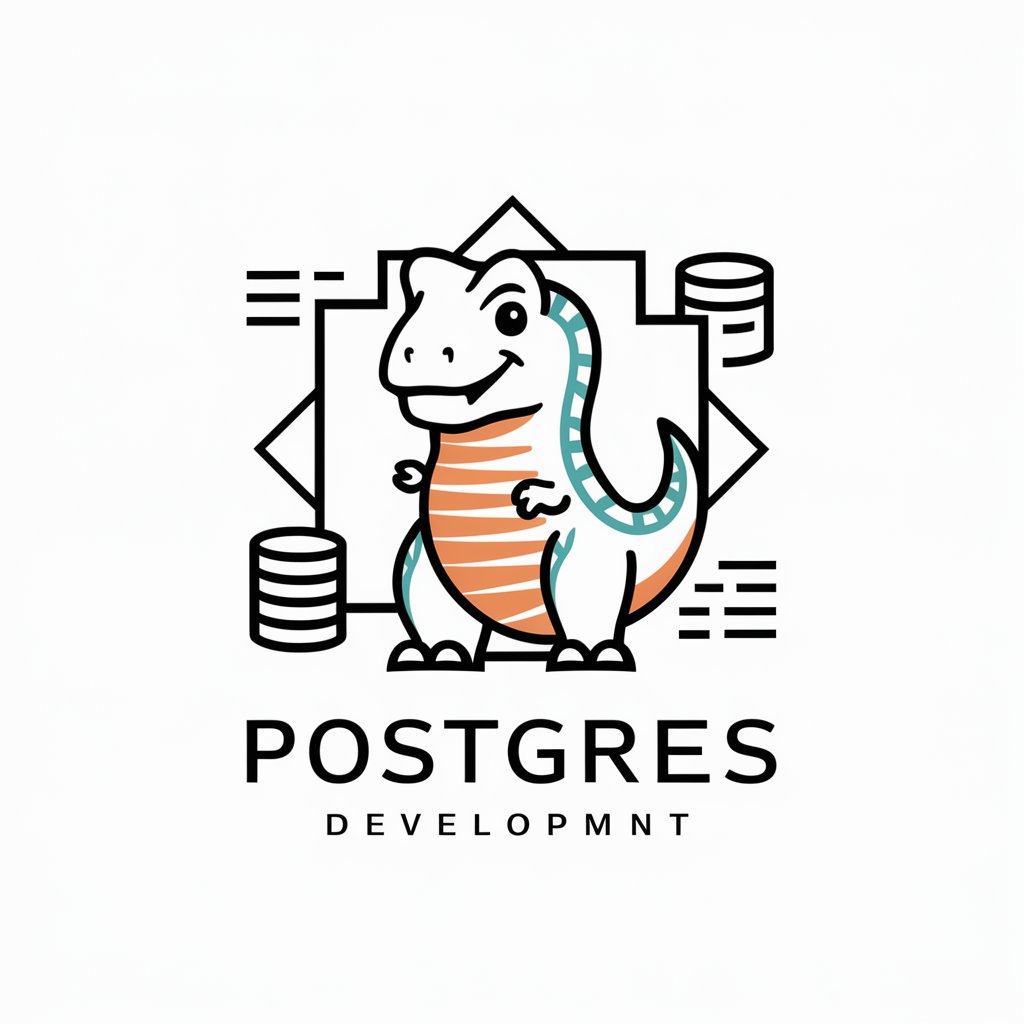
SQLite-lightweight embedded SQL engine
AI-powered embedded database assistant

Advanced SQLite assistant and query generator
✏️ Design a full db schema for a to-do app
👨🏽💻 Write some example queries in SQLite
⚡️ Optimize this SQLite query and fix errors
🧠 Teach me some useful skill or trick in SQLite
Get Embed Code
What is SQLite: Purpose, Philosophy,SQLite Functions and Users and Functionality
SQLite is a lightweight, self-contained, serverless relational database engine. It is designed to be embedded directly into applications, requiring minimal setup and no separate server process. SQLite stores the entire database as a single cross-platform file on disk, which makes it extremely portable and easy to manage. It implements most of the SQL-92 standard, supports transactions (ACID-compliant), and is highly efficient in both speed and resource usage. SQLite was created with the intention of simplifying the database experience for applications that don’t require the overhead of a client-server database. It is widely used in mobile applications, desktop software, and IoT devices where low latency and zero-configuration are crucial. **Example Scenario:** A mobile application (e.g., a note-taking app) uses SQLite to store user notes locally on the device. There’s no need for a backend database until the user decides to sync data online. SQLite allows full CRUD (Create, Read, Update, Delete) operations with minimal footprint and excellent speed.
Key Functions and Practical Applications of SQLite
Example
An Android app using SQLite to store user settings, logs, and offline data.
Scenario
A fitness tracker app records steps, heart rate, and GPS locations locally in SQLite, allowing it to function without internet access. Once the device is back online, the app syncs the local data with a cloud service.
Data Caching
Example
A desktop mapping application caches map tiles in SQLite to avoid repetitive downloads.
Scenario
When the user browses a new area, the app fetches map data from the server and stores it in SQLite. If the user revisits the area, the app loads the data directly from local storage, improving speed and reducing bandwidth.
Testing and Prototyping
Example
A web application developer uses SQLite for prototyping before scaling to PostgreSQL.
Scenario
During early development, the dev team integrates SQLite into a Node.js backend for rapid testing. Since it's serverless and easy to deploy, developers can test schemas and queries quickly before moving to a more robust RDBMS in production.
Who Should Use SQLite and Why?
Mobile App Developers
SQLite is integrated into both Android and iOS SDKs, making it an ideal choice for developers who need a robust local database. It provides fast read/write access and doesn't require a network connection, which is essential for offline-first mobile applications.
Embedded Systems Engineers and IoT Developers
Devices like thermostats, routers, and automotive systems often use SQLite for data logging, configuration storage, and state management. Its zero-admin nature and minimal resource usage make it a perfect fit for systems with constrained memory and CPU.
How to Use SQLite Effectively in 5 Steps
1. Try SQLite instantly
Visit aichatonSQLite Usage and Featuresline.org for a free trial without login, also no need for ChatGPT Plus. It provides a convenient, browser-based interface to explore SQLite without installation.
2. Install SQLite locally
Download the SQLite command-line tool from the official website (sqlite.org/download.html). It runs on Windows, macOS, and Linux. No external dependencies required.
3. Create your database
Run `sqlite3 mydatabase.db` in the terminal to create and interact with a new SQLite database. You can then use standard SQL commands to define schema and insert data.
4. Use SQL queries for CRUD operations
Use SQL statements like `CREATE TABLE`, `INSERT INTO`, `SELECT`, `UPDATE`, and `DELETE` to manage and query your data. Use joins and indexes for optimization.
5. Integrate with applications
SQLite can be embedded in Python, Java, C/C++, PHP, and mobile apps. Use SQLite libraries (e.g., `sqlite3` in Python) for programmatic access and transactions.
Try other advanced and practical GPTs
PDF Summarizer
AI-powered PDF summaries in seconds

Improve your job application and cover letter
AI-powered job match analysis and cover letter writing

Zappychat AI Prompt Generator
AI-Powered Prompts for Smarter Conversations

Cargo Ship Captain
AI-driven maritime advice for professionals.

Blog PF & Editor
AI-powered content editing and optimization

Chat with GPT 4o ("Omni") Assistant
AI-powered conversations for every task

Jest Test Builder
AI-Powered Test Builder for Jest

JSON
AI-powered JSON parsing and validation tool.

Dominant Girlfriend
AI-powered sass, stories, and seduction.

LaTeX Code Generator
AI-powered LaTeX generation for precision writing

Cố Vấn Nhân Sinh
AI-powered guidance for a deeper life

Architecture Design Photorealistic Studio
AI-Powered Tool for Exterior Architecture Renderings

- Data Logging
- Mobile Storage
- Prototyping DB
- Testing Suite
- Offline Access
Common SQLite Questions & Expert Answers
What is SQLite used forSQLite Usage Guide?
SQLite is a lightweight, serverless SQL database engine used in mobile apps, embedded systems, desktop software, and websites where a full RDBMS is unnecessary.
How does SQLite differ from MySQL or PostgreSQL?
SQLite is serverless, self-contained, and file-based, making it ideal for local storage and low-maintenance environments. Unlike MySQL/PostgreSQL, it doesn't require a separate server process.
Is SQLite suitable for production use?
Yes, especially for single-user or low to moderate concurrency scenarios like embedded systems, mobile apps, IoT devices, or standalone desktop tools.
Can multiple users access the same SQLite file?
While SQLite supports file-level locking and limited concurrency, it's best for low-write or mostly-read environments. For high-concurrency systems, use a client-server DB.
How do you backup a SQLite database?
You can use the `.backup` command in the SQLite CLI or copy the database file when it's not in use. You can also use the `sqlite3_backup` API in code.






